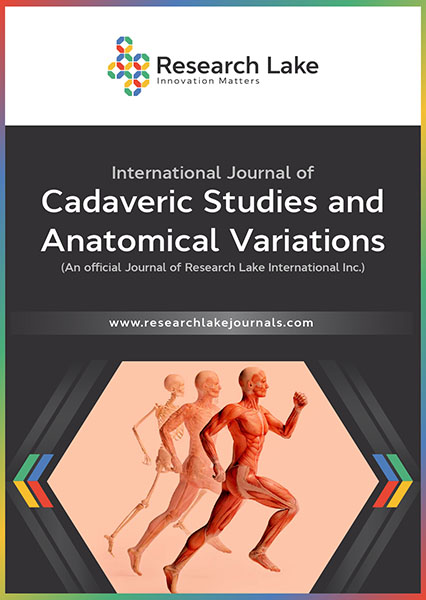Anatomical Variations of Human Pulmonary Fissures: A Cadaveric Study Conducted in Western Kenya
Abstract
Aim and Objective: This cadaveric study was done to describe the variations in the pattern of pulmonary fissures in Western Kenyan population. Data were sourced from 68 lungs fixed in formalin in gross anatomy laboratory of the Department of Human Anatomy, Uzima University. The fissures were studied and the results compared with the previous studies.
Results: In this study 83.82% of lungs had a classical appearance a “textbook” lung: three major fissures that were complete without any accessory fissure. Out of the 31 right lungs examined, the horizontal fissure was absent in 0% lungs, incomplete in 6 lungs (16.13%), and complete in 25 lungs (80.64%). Out of the 37 left lungs, the oblique fissure was incomplete in 4 lungs (10.70%) and complete in 29 lungs (86.30%). The fissure was absent in one of the lungs (2.70%). Four right lung accessory fissures were observed (12.90%). Six left lungs (16.67%) had accessory fissures.
Conclusion: Incidence of complete of oblique fissure was greater in our present work when compared our results with other authors. The incomplete oblique fissure and incomplete horizontal fissure in our study varied compared with other studies. Our study recorded a prevalence of absent oblique fissure in the left lung that was greater in relation to absent horizontal fissure. The superior accessory fissure was higher in our study compared to other studies as well as compared the inferior accessory fissure in our study. The left minor fissure was the most frequently appearing accessory fissure in our study. Anatomists should note that lung fissure anatomy is more variable than orthodoxly presented. Clinicians must be warranted towards the depth and occurrence of these variations. Considering these variants we recommend more explorative research should be done on this topic to cast more light on this.
Copyright (c) 2023 Juma John Ochieng Juma

This work is licensed under a Creative Commons Attribution-NonCommercial 4.0 International License.
Copyright © by the authors; licensee Research Lake International Inc., Canada. This article is an open access article distributed under the terms and conditions of the Creative Commons Attribution Non-Commercial License (CC BY-NC) (http://creativecommons.org/licenses/by-nc/4.0/).















